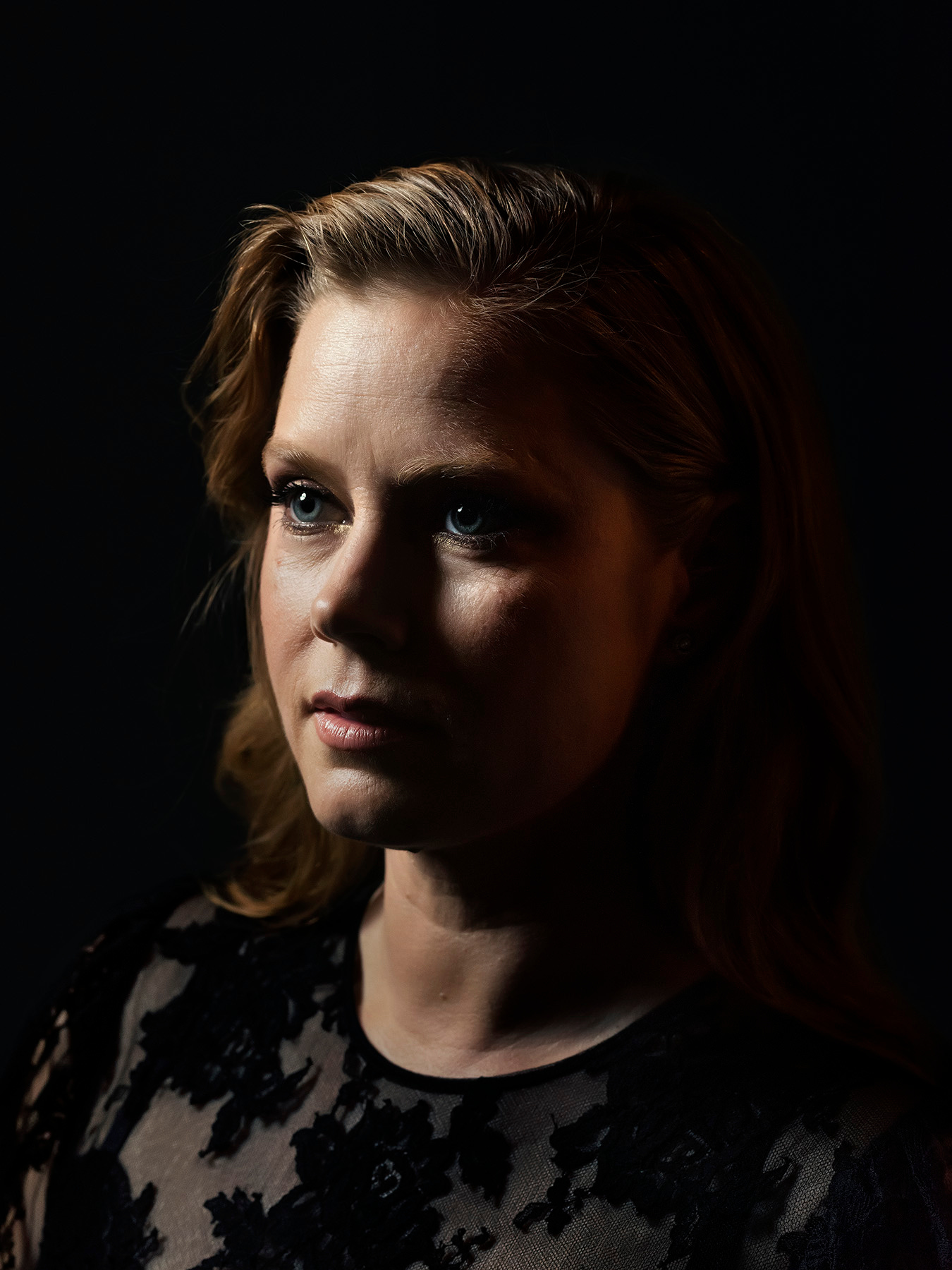I recently wrote about editing a magazine feature where my editor from TIME magazine and I worked in person with hard-copy photos to make a final selection. But the luxury of working like this is not the norm. For the majority of assignments I do, I sit alone in front of a screen and rely on my own judgment.
Today, I’ll share the entire take of a portrait sitting I had with actor Amy Adams. In 2017, I covered the T: The New York Times Style Magazine “Greats” party at the Met Breuer in New York, setting up a makeshift studio to photograph the celebrities attending. (I previously wrote about my lighting process for this shoot for a portrait of Nicki Minaj.)
The Times staff introduced Amy to me; she put out her hand to shake mine, made direct eye contact with me, and asked me what I wanted her to do. I directed her toward a fire escape off to the side of the cocktail party, where my assistant was holding a light with an octabox. Amy was delightful and accommodating, but there still wasn’t much time. Over the next 78 seconds, I made 32 photographs of her and we wrapped.
When I sat at my computer to choose a photo of Amy, I did the same thing I always do. I brought up the digital contact sheet, scrolled the entire sequence of photographs, and let myself gravitate to one frame. I always work like this because the strongest picture will stand out from the others—it will have a presence that rises above all the photos around it.
I find if I try to edit by clicking from one enlarged photo to the next, it's hard to see the continuum of the shoot. This can be a pitfall because I might start seeing small strengths in several of the photos and get confused by them. By pulling back to a contact sheet view, I can keep perspective on the entire sequence. The right frame always presents itself.
For a large set of photos, I might choose 3 or 4 from the digital contact sheet, then display these next to each other in a grid to choose the final one. What makes the frame the one is usually personal taste, the fruition of the concept you had while you took the image, and intuition.
For these photographs of Amy, I wanted to make a portrait that felt dark and contemplative, an extension of the years of conflict work I had pursued. It was my aim to subvert a celebrity narrative and make Amy look vulnerable. She smiled at me in the early frames, before I asked her to gaze away from the camera, to look serious and contemplative. “Forget I am here and have a moment to yourself”, I said.
When I edited I was looking for the moment where she seemed not to be aware of me, staring off into the periphery. There were a few photos in the take that felt like this, nut as I whittled it down I settled on #764 because it felt like the manifestation of my concept.
I often change my mind on photos and indecisiveness can be precarious. If I stare too long, I will confuse myself. If I spend too much time comparing, I might choose a photo that, in retrospect, I might view as the wrong one. It’s always best to approach editing clear and relaxed and just decide. My gut always knows what the picture is and it's important to respond to that before the intellect confuses things.








Great walk through on a human subject and your choices!